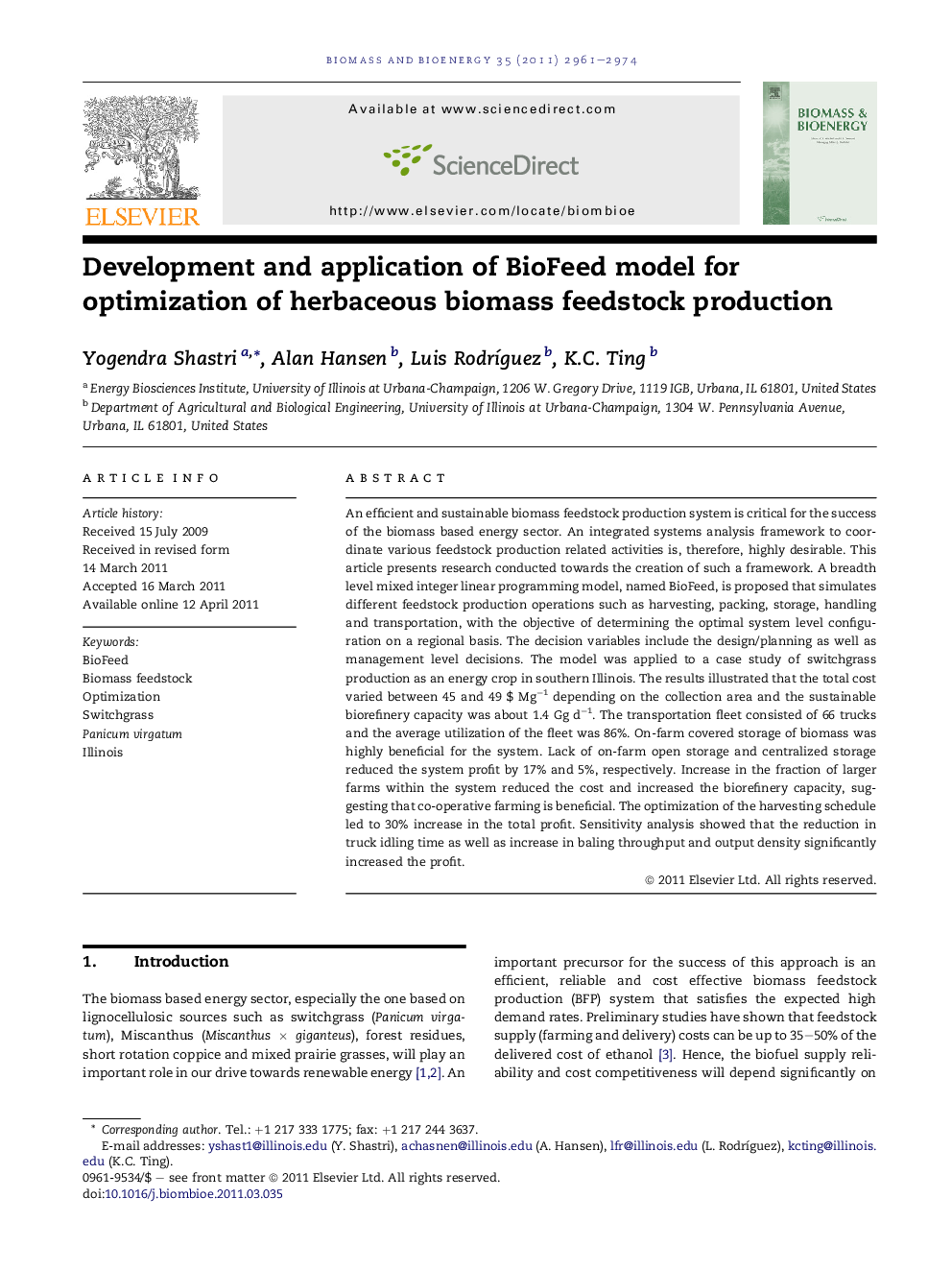| Article ID | Journal | Published Year | Pages | File Type |
|---|---|---|---|---|
| 677882 | Biomass and Bioenergy | 2011 | 14 Pages |
An efficient and sustainable biomass feedstock production system is critical for the success of the biomass based energy sector. An integrated systems analysis framework to coordinate various feedstock production related activities is, therefore, highly desirable. This article presents research conducted towards the creation of such a framework. A breadth level mixed integer linear programming model, named BioFeed, is proposed that simulates different feedstock production operations such as harvesting, packing, storage, handling and transportation, with the objective of determining the optimal system level configuration on a regional basis. The decision variables include the design/planning as well as management level decisions. The model was applied to a case study of switchgrass production as an energy crop in southern Illinois. The results illustrated that the total cost varied between 45 and 49 $ Mg−1 depending on the collection area and the sustainable biorefinery capacity was about 1.4 Gg d−1. The transportation fleet consisted of 66 trucks and the average utilization of the fleet was 86%. On-farm covered storage of biomass was highly beneficial for the system. Lack of on-farm open storage and centralized storage reduced the system profit by 17% and 5%, respectively. Increase in the fraction of larger farms within the system reduced the cost and increased the biorefinery capacity, suggesting that co-operative farming is beneficial. The optimization of the harvesting schedule led to 30% increase in the total profit. Sensitivity analysis showed that the reduction in truck idling time as well as increase in baling throughput and output density significantly increased the profit.
► An optimization model named BioFeed is developed to study biomass feedstock production. ► Model was applied to study switchgrass production in southern Illinois. ► Delivered cost ranged between 45 and 49 $ Mg−1 based on collection area. ► On-farm covered storage important and larger farm size reduced cost. ► Optimized harvest scheduling reduced cost by 9%.
